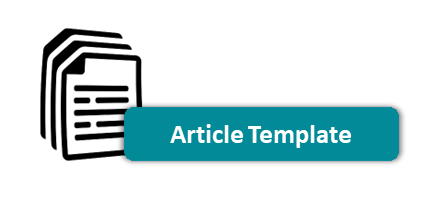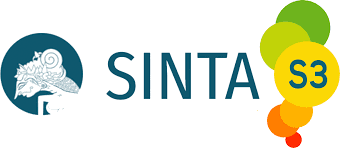KOMPARASI PENINGKATAN INKLUSI KEUANGAN DAN INDIKATOR PEMBANGUNAN DI INDONESIA
DOI:
https://doi.org/10.24002/modus.v30i1.1590Abstract
The level of financial inclusion depicts public participation or access of financial products and services provided by financial institutions in a country. Such access is viewed essential, because it illustrates the opportunity of a more prosperous life for the society. The results of a survey conducted by the Financial Services Authority of Indonesia shows that financial inclusion in Indonesia has increased in considerably rapid pace in the last few years. However, is the improvement of conditions for financial inclusion in line with the improvements to the indicators of development in Indonesia? The study was intended to answer this question. Analysis tools used are descriptive statistics by making use of secondary data available on the Financial Services Authority and the Central Bureau of Statistics. Based on the results of the analysis it can be concluded that improvements to financial inclusion apparently has not been able to contribute positively towards the many indicators of development of Indonesia. Various improvements are necessary in order for increased financial inclusion to be transmitted effectively to the improvement of welfare of the population of Indonesia.
Keywords: access, financial inclusion, indicators of development.
References
Alliance for Financial Inclusion. (2011). Measuring Financial Inclusion Core Set of Financial Inclusion Indicators. Financial Inclusion Data Working Group.
Inter Media. (2017). Financial Inclusion Insights. www.finclusion.org.
Magaldi de S., Mariana. (2015). Financial Inclusion and Global Regulatory Standards: An Empirical Study Across Developing Economies. Paper No. 7, March, New Thinking and the New G20 Series. Center for International Governance Innovations (CIGI).
Otoritas Jasa Keuangan. (2017). Survei Nasional Literasi dan Inklusi Keuangan 2016. Jakarta.
Park, C.Y dan Rogelio V. M, Jr. (2015). Financial Inclusion, Poverty, and Income Equality in Developing Asia. ADB Economics Working Paper Series.
Peraturan Otoritas Jasa Keuangan Nomor 76/POJK.07/2016 tentang Peningkatan Literasi dan Inklusi Keuangan di Sektor Jasa Keuangan Bagi Konsumen dan/atau Masyarakat.
Rajendran, K. (2013). Financial Inclusion, Financial Exclusion and Inclusive Growth. SSRN Electronic Journal, April.
Sahay, R, Martin C., Papa N’Diaye, Adolfo B, Srobona Mitra, Annette Kyobe, Yen Nian Mooi, dan Seyed Reza Yousefi. (2015). Financial Inclusion: Can It Meet Multiple Macroeconomic Goals? IMF Discussion Note, SDN/15/17, September.
UNCTAD. (2015). Access to Financial Services as a Driver for the Post-2015 Development Agenda. Polici Brief, No. 35, September. UNCTAD.
World Bank. (2014). Financial Inclusion. Global Financial Development Report.
World Bank. (2014). Measuring Financial Inclusion around the World. The Global Findex Database.
Yoo, T, 2017. Point of View: Digitizing Financial Inclusion. San Joce: CISCO.














